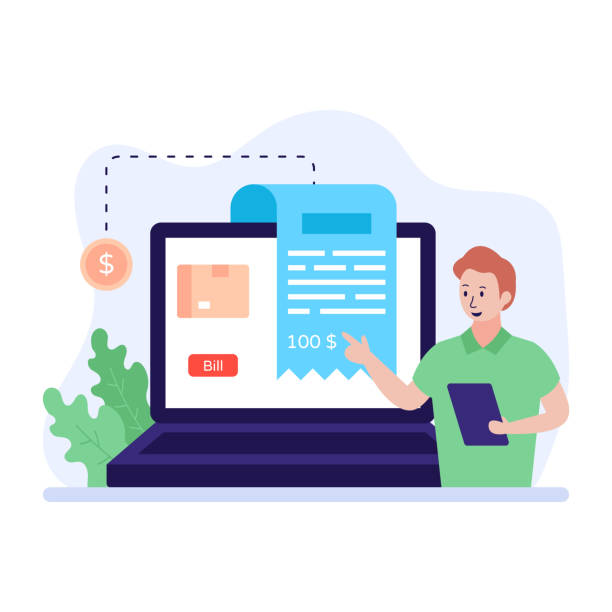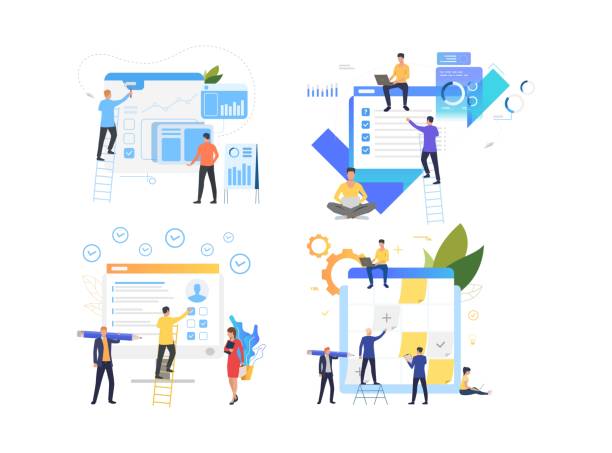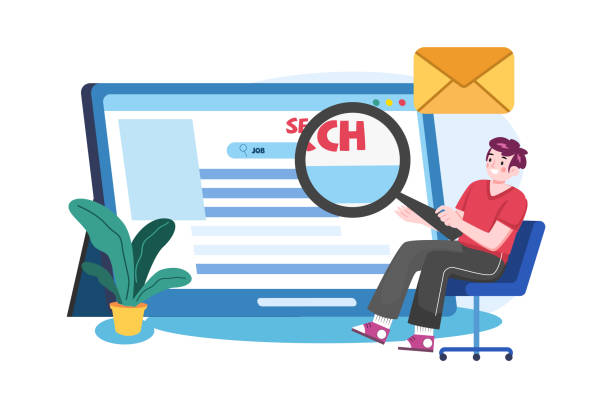Introduction and Importance of Personal Website Design
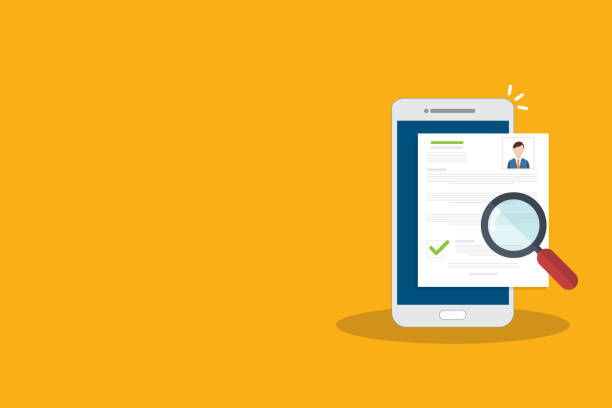
Today, having a strong online presence is more important than ever, and #personal website design plays a key role in this.
A personal website is not only a showcase for your abilities and expertise, but also provides an independent platform for sharing your ideas, projects, and experiences.
This dedicated space allows you to have complete control over your content and present a professional and unique image of yourself to potential audiences and employers.
The importance of this is such that many professionals from various fields, including artists, writers, developers, and consultants, consider personal website design an essential step for career advancement and personal branding.
This website can be your online resume, which is dynamic and updatable, going beyond a static document.
With a personal website, you can not only showcase your technical skills but also reflect your unique #personality and perspectives.
This is especially crucial in today’s competitive job market, where differentiation is highly important.
A website allows you to display your #portfolio and projects in an organized and appealing way, which is a significant advantage over simply sending a textual resume.
Furthermore, personal branding through a professional website increases your credibility in your field and establishes you as a trustworthy and knowledgeable expert.
In essence, this is a long-term investment in your career and personal journey that opens up new opportunities.
Beyond career aspects, a personal website can function as a digital diary, a blog, or even a platform for sharing your tutorials and experiences.
This flexibility makes personal website design not just a work tool, but a powerful instrument for personal growth and community connection.
You can interact with your audience through comment sections or contact forms, creating a network of professional and personal connections.
This explanatory approach helps us gain a deeper understanding of the countless potentials of a personal website and why it is considered a fundamental step in today’s digital world.
Do you have an online store but your sales aren’t what you expected? Rasaweb solves your problem forever with professional e-commerce website design!
✅ Significant increase in conversion rates and sales
✅ Unparalleled user experience for your customers
⚡ Click to get free consultation with Rasaweb!
Initial Planning Steps for a Personal Website

Before delving into the technical details of #personal website design, it is essential to start with meticulous planning.
This guidance stage forms the foundation for your website’s success and prevents future waste of time and resources.
The first step is to define the main objective of your website.
Do you intend to showcase your portfolio? Launch a personal blog? Offer consulting services? Or a combination of these? Answering this question helps you determine the necessary structure and content.
Next, you need to identify your target audience.
Who will be visiting your website? What are their interests and needs? This understanding helps you choose the language, tone, and design style of the website appropriate for your audience.
The next step in these initial stages is choosing a suitable and appealing #domain name.
The domain name is your website’s address on the internet and should be easy to remember, relevant to you or your business, and, if possible, short.
It is best if your domain name is a reflection of your personal brand identity.
After that, you need to choose a reputable #hosting company.
Hosting is the space where your website’s files are stored and made accessible to the public.
Hosting quality directly impacts website loading speed and stability.
Researching different service providers and comparing their prices, bandwidth, storage space, and customer support is crucial.
Initial planning also includes #determining the overall website structure and its main content.
Prepare a list of necessary pages (such as homepage, about me, portfolio, contact me, blog) and anticipate the initial content for each section.
This helps you have a clear roadmap for your personal website development process.
Finally, consider a realistic budget and timeline for your project.
Do you intend to design the website yourself or seek help from a professional? Each of these choices will have different implications for time and cost.
This guiding approach ensures that you enter the implementation phase of website design with an open mind and complete readiness.
Choosing the Right Platform and Tools for Personal Website Design
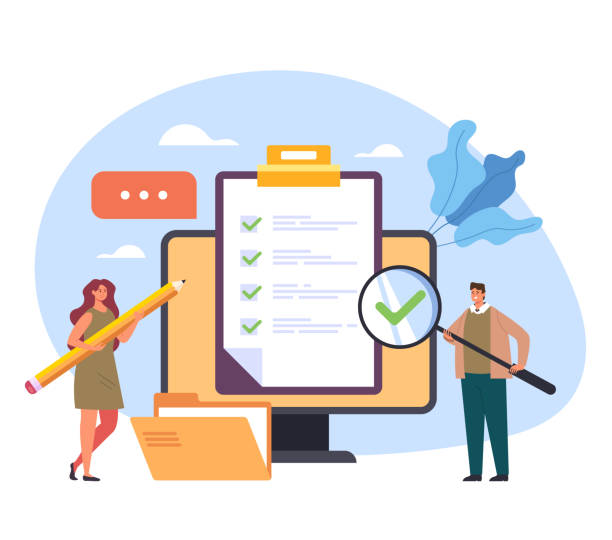
After the planning stage, it’s time to choose the right #platform and #tools for personal website design.
This is a specialized decision that will greatly impact your ease of work, flexibility, and costs.
Numerous options are available, from Content Management Systems (CMS) to website builders and manual coding.
Each has its own advantages and disadvantages that should be considered based on your needs and technical knowledge level.
For most users, CMSs like WordPress are considered an excellent choice.
WordPress is a powerful, flexible, and user-friendly platform that offers thousands of themes and plugins for customization.
These features have made it an ideal option for building personal websites, even for individuals with little coding knowledge.
Another option is to use #website builders like Wix, Squarespace, or Weebly.
These platforms allow you to build a website with a drag-and-drop user interface, without needing coding knowledge.
This option is very suitable for those looking for a quick and easy solution and who don’t require complex customizations.
In contrast, if you have high technical knowledge or are looking for complete control over your website, you can opt for coding with languages like HTML, CSS, and JavaScript.
This method provides infinite customization but requires more time and expertise.
The table below provides a comparison between three main approaches in personal website design:
| Feature | WordPress (CMS) | Website Builders | Manual Coding |
|---|---|---|---|
| Ease of Use | Medium to High | Very High | Low (requires technical knowledge) |
| Flexibility and Customization | High (via themes and plugins) | Limited | Unlimited |
| Cost | Medium (hosting and domain) | Medium to High (monthly subscription) | Variable (software, time) |
| Required Technical Knowledge Level | Low to Medium | Almost Zero | High |
Choosing the right tools and platform is a crucial step in building your personal website and should be done with careful consideration and research.
Whatever choice you make, the ultimate goal is to create a strong online platform for your presence.
Visual Design and User Experience (UX) in Personal Website Design

After selecting the platform, it’s time for the #visual and #user experience (UX) aspects in personal website design.
This section is instructional and helps you create a website that is not only beautiful but also user-friendly and effective.
Visual design involves choosing colors, fonts, images, and element layout that should align with your personal brand identity.
A #clean and #professional design attracts visitors and enhances your credibility.
Start by choosing an appropriate color palette; colors greatly influence user emotions and perception.
Fonts should also be legible and consistent with your website’s overall style.
Remember that simplicity is often the best option.
User Experience (UX) refers to the ease of use and user satisfaction with your website.
A website with good UX provides a clear path for visitors, guides them towards the information they are looking for, and prevents confusion.
The most important UX principles include #easy navigation, #high loading speed, and #Responsive Design.
Website navigation should be intuitive; users should be able to easily move from one page to another and find what they need.
Website loading speed is also very important; slow websites drive visitors away and negatively impact SEO ranking.
Responsive design means that your website should display correctly and function properly on all devices, including desktops, tablets, and mobile phones.
Given the increasing use of mobile devices for internet access, this feature holds immense importance in personal website development.
Images and graphics should be optimized to have good quality while maintaining a small file size to avoid slowing down loading speed.
Using whitespace and logical content organization also helps improve readability and visual appeal.
Remember that the goal of this instructional section is to empower you to build a website that not only looks good but also provides a positive user experience for visitors and adheres to user experience design principles.
Losing customers due to your online store’s outdated appearance or slow speed? Rasaweb’s expert team solves these problems with professional e-commerce website design!
✅ Increased customer trust and brand credibility
✅ Stunning speed and excellent user experience
Get a free consultation with Rasaweb right now ⚡
Creating Engaging and Useful Content for a Personal Website
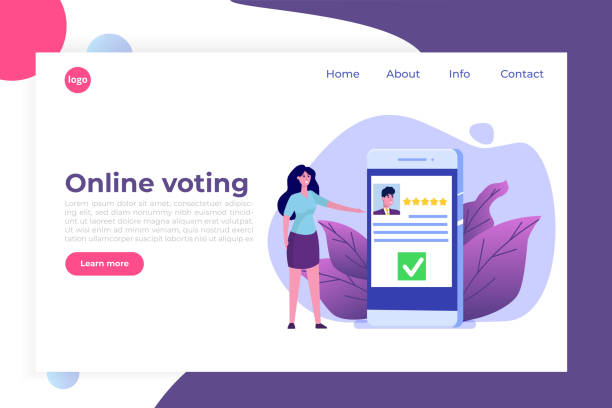
Content is the #beating heart of any website, and for personal website design, creating engaging and useful content is of particular importance.
This thought-provoking content section helps you not only present your information but also establish a deeper connection with your audience.
The first step in content creation is identifying your strengths and expertise.
What makes you unique? What knowledge or experience do you have that would be beneficial to others? By answering these questions, you can create truly valuable content.
#Quality content not only helps attract visitors but also encourages them to spend more time on your website.
You can include various types of content on your personal website.
#Blogging is one of the most effective ways to share your insights, experiences, and knowledge.
Blog articles can be about projects you’ve worked on, lessons you’ve learned, or even your opinions on current issues in your field.
Using high-quality images, videos, and infographics can enhance the visual appeal of your content and make it more digestible for your audience.
Also, your portfolio section should include your best works, with sufficient descriptions of each project, your role in it, and the results achieved.
Use various content formats to make your website dynamic and diverse.
In addition to textual articles, you can offer podcasts, video tutorials, checklists, and even small e-books.
Creating #interactive content, such as surveys or quizzes, can further engage users.
Always remember that your content should be original and unique.
Copying from others is not only ethically wrong but also harms your SEO ranking.
Your website is an opportunity to showcase your unique voice.
By focusing on this thought-provoking content aspect, you can ensure that your personal website not only looks professional but also actively attracts and retains audiences.
Search Engine Optimization (SEO) for Personal Websites
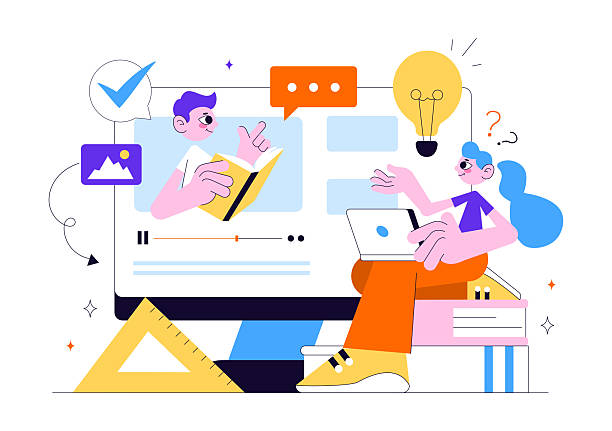
Even the best personal website design is useless without visibility.
This is where #SEO comes into play.
SEO is a set of techniques that helps your website achieve a higher ranking in Google and other search engine results.
This analytical section shows you how to optimize your website for visibility.
The first step in SEO is #keyword research.
Identifying the words your target audience uses to find content related to your expertise is crucial.
These keywords should be naturally integrated into your website’s content, page titles, meta descriptions, and URLs.
#On-Page SEO involves optimizing your website’s internal elements.
Ensure all images have appropriate Alt tags, URL structures are clean and understandable, and Heading tags (H1, H2, H3, etc.) are used correctly for content organization.
Website loading speed is also an important SEO factor.
Slow websites are penalized by search engines.
Using #optimized images, clean coding, and a reputable hosting can help improve speed.
Furthermore, the responsiveness of the website for proper display on mobile is a crucial Google ranking factor.
#Off-Page SEO primarily refers to link building.
When other websites link to yours, this is considered a sign of credibility by search engines.
You can create quality links by producing valuable content that others are willing to share, or by connecting with bloggers and collaborating websites in your field.
Using tools like Google Analytics and Google Search Console to monitor website performance and identify SEO improvement opportunities is crucial.
A well-designed and optimized website has a much higher chance of being seen by your audience and achieving your goals.
This analytical section indicates that SEO is an ongoing process essential for the long-term success of your personal website.
Continuous Maintenance and Updates for a Personal Website

After initial launch and optimization, continuous maintenance and #updates are vital for the sustainability and success of your personal website.
This news section reminds you that a live and dynamic website requires continuous attention to maintain optimal performance and keep up with technological changes and user needs.
The first and most important aspect of maintenance is website #security.
Regularly updating the Content Management System (like WordPress), themes, and plugins is essential to fix security vulnerabilities and bugs.
Cyberattacks and malware can seriously damage your website, so prevention is better than cure.
Regular backups of website data are also a vital practice.
In case of any technical issue, server failure, or cyberattack, having an up-to-date backup helps you quickly restore your website and prevent data loss.
In addition to technical aspects, content #updates are also highly important.
Fresh and relevant content not only encourages users to return but also signals to search engines that your website is active and valuable.
Adding new blog articles, updating portfolios, or correcting outdated information are among the tasks that should be performed regularly.
| Action | Description | Suggested Frequency |
|---|---|---|
| Software Updates | Content Management System (CMS), themes, and plugins | Monthly / Upon new update release |
| Data Backups | Database and website files | Weekly / Before major changes |
| Broken Link Check | Identify and fix broken internal or external links | Quarterly |
| Speed and Performance Check | Using tools like Google PageSpeed Insights | Monthly |
| Content Updates | Adding new articles, updating old information | Regularly, at least monthly |
Monitoring website #performance using tools like Google Analytics is also an important maintenance action.
These tools provide you with information about website traffic, user behavior, and traffic sources, which are very useful for future decision-making.
By following these maintenance and update tips, your personal website will not only be a one-time project but will transform into a sustainable and growing digital asset.
Securing Your Personal Website Against Cyber Threats

Security is one of the most important and specialized aspects of #personal website maintenance that is often overlooked.
In today’s world, cyber threats are increasing, and a personal website is no exception.
#Website security means protecting your data and visitors from malware attacks, hacking, and unauthorized access.
Neglecting security can lead to data loss, reputation damage, and even blacklisting by search engines.
The first step to enhance security is to use strong and unique passwords for your website’s admin panel, hosting, and database.
Installing an #SSL/TLS certificate (which results in an HTTPS address) is essential.
SSL not only encrypts the communication between the user’s browser and the website server, ensuring data security, but it is also a crucial ranking factor for search engines.
Most hosting companies today offer free SSL.
Additionally, regularly updating all website components, including the Content Management System (CMS), themes, and plugins, is crucial to fix known #security vulnerabilities.
Many attacks occur due to the use of old and vulnerable software versions.
Using security plugins or tools (like WordPress security plugins) that offer features such as malware scanning, Web Application Firewall (WAF), protection against Brute Force attacks, and #two-factor authentication can significantly enhance the security of your personal website.
Limiting unsuccessful login attempts can also prevent Brute Force attacks.
Regular and automatic website backups are your last line of defense against data loss.
In the event of a successful attack, having a healthy backup allows you to quickly restore your website.
Remember that security is an ongoing process, and maintaining a secure and reliable personal website requires vigilance and proactive measures.
Don’t have a corporate website yet and missing out on online opportunities? With professional corporate website design by Rasaweb,
✅ Double your business’s credibility
✅ Attract new customers
⚡ Free consultation for your corporate website!
Ways to Monetize Your Personal Website
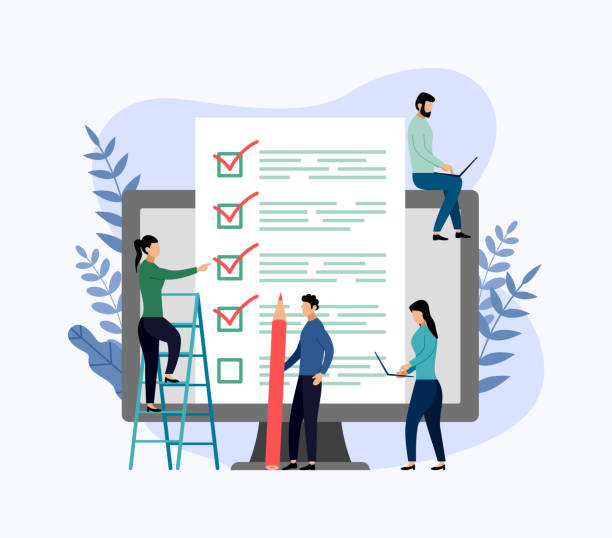
Many people undertake personal website design with the goal of #personal branding and knowledge sharing, but this website can also be a fun yet serious source of income.
There are various ways to monetize a personal website, which differ depending on your content and audience.
One of the most common methods is #advertising.
You can use platforms like Google AdSense to display relevant ads on your website and earn income per click or impression.
Of course, for significant income from advertising, you need high traffic.
#Affiliate Marketing is another method where you promote others’ products or services on your website and earn a commission for each sale or successful action made through your link.
This method is particularly effective for bloggers and experts who review or recommend products.
If you have specific knowledge or expertise, you can sell your #digital products, such as e-books, online courses, design templates, or personal consultations.
This method has high earning potential as you have complete control over your pricing and profit.
Offering #consulting or coaching services is also possible through a personal website.
If you are an expert in a specific field, you can use your website as a platform to attract clients and provide in-person or online consulting services.
Additionally, you can create a premium subscription section on your website that provides access to exclusive content, private forums, or specific resources in exchange for a monthly or annual fee.
Crowdfunding through platforms like Patreon is also a growing option for content creators.
By using these entertaining yet commercial approaches, your personal website can transform from a mere showcase into a sustainable source of income, helping you achieve your financial and professional goals.
Engaging with Your Audience and Expanding Your Personal Website’s User Community
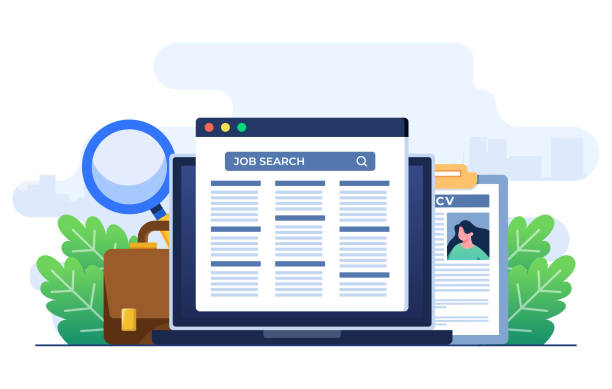
A successful #personal website is not limited to beautiful design and quality content; #engaging with your audience and expanding its user community are also critically important.
This explanatory section helps you use effective strategies to increase interaction with your visitors and build a loyal community around your personal brand.
The first step for effective communication is to enable the #comments section in blog articles and respond to them.
This shows that you value your audience’s feedback and are open to dialogue.
Encouraging users to ask questions and provide comments increases engagement.
Using easy and accessible #contact forms on your website is another way to establish communication.
Ensure that visitors can easily contact you, whether to ask questions, provide feedback, or request collaboration.
Integrating your website with social networks is also a powerful strategy for expanding reach and increasing engagement.
Include social sharing buttons in your content and share your website link on your social media profiles.
This helps disseminate your content and attract more traffic.
Launching an #Email Newsletter is also an excellent way to maintain contact with your audience and inform them about new content, updates, or news related to you.
You can encourage people to subscribe to your newsletter by offering exclusive content or special offers to subscribers.
Hosting #webinars, online Q&A sessions, or even surveys and contests on your website can further engage users and foster a sense of community belonging.
Finally, being active in online communities related to your field and mentioning your website (naturally and without spam) can help attract new audiences.
By focusing on these communication aspects, your personal website design will transform into a dynamic hub for dialogue and growth.
Frequently Asked Questions
| Question | Answer |
|---|---|
| 1. Why should we have a personal website? | To showcase skills, resume, portfolio, and create a professional personal brand. |
| 2. What is the first step for designing a personal website? | Defining the website’s main goal (e.g., portfolio display, online resume, personal blog) and target audience. |
| 3. How important is choosing a suitable domain name? | Very important; the domain name should be relevant to your identity, memorable, and easy to type (e.g., your first and last name). |
| 4. What kind of content should we put on a personal website? | Usually includes sections like “About Me”, “Resume”, “Portfolio”, “Contact Methods”, and optionally “Blog”. |
| 5. What is Responsive Design and why is it important? | It means the correct and optimized display of the website on all devices (mobile, tablet, laptop) and is crucial for user experience and SEO. |
| 6. What platforms are recommended for building a personal website? | WordPress for more flexibility and control, or using Website Builders like Wix or Squarespace for simplicity. |
| 7. How can personal website SEO be improved? | Using relevant keywords, meta descriptions, quality and up-to-date content, optimizing images, and loading speed. |
| 8. What are the main challenges in maintaining a personal website? | Regular content and plugin updates, regular data backups, and website security monitoring. |
| 9. Is programming knowledge required for personal website design? | No, using Content Management Systems (CMS) like WordPress or website builder tools, a personal website can be created without coding. |
| 10. How can we promote and introduce our personal website? | Sharing links on social media, adding links in email signatures, business cards and resumes, and professional networking. |
And other services of Rasaweb Advertising Agency in the field of advertising
Smart Content Strategy: Revolutionize click-through rates with the help of Google Ads management.
Smart Google Ads: A specialized service for increasing website traffic growth based on real data utilization.
Smart Digital Advertising: Designed for businesses looking to manage campaigns through precise audience targeting.
Smart Sales Automation: A quick and efficient solution for increasing click-through rates with a focus on attractive user interface design.
Smart Social Media: An innovative service for increasing digital branding through intelligent data analysis.
And over hundreds of other services in internet advertising, advertising consultation, and organizational solutions
Internet Advertising | Advertising Strategy | Advertorial
Resources
Personal Website Design on Web DizHow to Build a Personal Website by Iran SiteImportant Website Design Tips from HostingCreate a Custom Website with Sitecheh
? With Rasaweb Afarin, the digital future of your business is in our hands. By providing comprehensive services in SEO, content marketing, and multilingual website design, we guarantee a powerful and influential online presence for you.
📍 Tehran, Mirdamad Street, next to Bank Markazi, Kazerun Jonoubi Alley, Ramin Alley, No. 6

